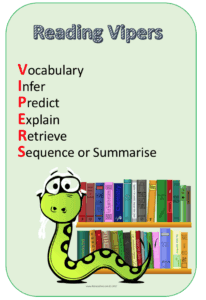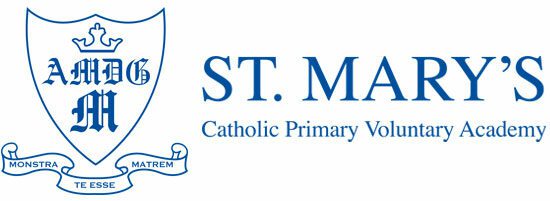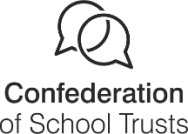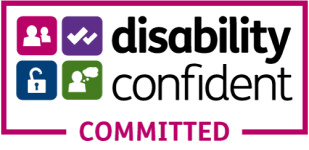Reading
At St Mary’s we aim to:
· Develop happy, healthy and curious learners who read confidently and fluently and seek to acquire knowledge independently
· Help our pupils to develop a lifelong enjoyment of reading, taking genuine pleasure from what they read
· Give our children the reading skills they need to access all areas of the curriculum
· Enable children to access, understand and begin to manage information
· Help children begin to understand the meaning of what they read and what is read to them
· Help children make responses to what they read and to justify their opinions
· Allow all children to use reading to become immersed in other worlds…both real and imagined!
At St Mary’s, we consider ourselves a community of readers. Therefore, we expect all adults to model and communicate their love of reading in the following ways:
· Story time
· Opportunities for reading for pleasure at KS1 and KS2
· Shared reading
· Teaching of reading skills to develop vocabulary and comprehension skills
· Providing calming reading areas that inspire our children to read
· Reading with the individual children who need our support the most.
The Teaching of Reading
Reading is a multi-strategy approach to understanding the written word. It is not simply the decoding of black marks on the page but involves the ability to read with understanding a wide range of different texts, including fiction, non-fiction, real world texts such as labels, captions, lists and environmental print.
Competence in reading is the key to independent learning and therefore the teaching of reading should be given a high priority by all staff. Success in reading has a direct effect on progress in all areas of the curriculum and is crucial in developing children’s self-esteem, confidence and motivation.
Children should:
· Develop the ability to read aloud fluently and with expression;
· Develop the ability to read for meaning;
· Develop the skills required for the critical reading of texts;
· Be encouraged to read a wide range of fiction, poetry and non-fiction materials;
· Be taught a range of strategies for reading including:
v Phonic (sounding the letters and blending them together);
v Visual (whole word recognition and analogy with known words);
v Contextual (use of picture and background knowledge);
v Grammatical (which words make sense);
In addition to this children should:
· Be encouraged to listen attentively
· Gain awareness of the close links between reading and writing activities.
A whole school approach to assessment and record keeping is used, and is recorded on O Track each term. Teaching staff also maintain their own individual class records of achievement in reading.
Children’s progress in phonics is continually reviewed through daily informal and half termly formal phonic assessments and evidence from their reading and writing.
Assessment is used to monitor progress and to identify any child needing additional support as soon as they need it.
Assessment for learning is used:
· daily within class to identify children needing support
· weekly in the review sessions to assess gaps, address these immediately and secure fluency of GPCs, words and spellings.
Summative assessment is used:
· termly to assess progress, to identify gaps in learning that need to be addressed, to identify any children needing additional support and to plan the Keep-up support that they need.
· by SLT, SENDCO and the Reading Lead and scrutinised to narrow attainment gaps between different groups of children and so that any additional support for teachers can be put into place.
Reading here at St Marys
. Develop happy, healthy and curious learners who read confidently and fluently and seek to acquire knowledge independently
· Help our pupils to develop a lifelong enjoyment of reading, taking genuine pleasure from what they read
· Give our children the reading skills they need to access all areas of the curriculum
· Enable children to access, understand and begin to manage information
· Help children begin to understand the meaning of what they read and what is read to them
· Help children make responses to what they read and to justify their opinions
· Allow all children to use reading to become immersed in other worlds…both real and imagined!
At St Mary’s, we consider ourselves a community of readers. Therefore, we expect all adults to model and communicate their love of reading in the following ways:
· Story time
· Opportunities for reading for pleasure at KS1 and KS2
· Shared reading
· Teaching of reading skills to develop vocabulary and comprehension skills
· Providing calming reading areas that inspire our children to read
· Reading with the individual children who need our support the most
Reading is a multi-strategy approach to understanding the written word. It is not simply the decoding of black marks on the page but involves the ability to read with understanding a wide range of different texts, including fiction, non-fiction, real world texts such as labels, captions, lists and environmental print.
Competence in reading is the key to independent learning and therefore the teaching of reading should be given a high priority by all staff. Success in reading has a direct effect on progress in all areas of the curriculum and is crucial in developing children’s self-esteem, confidence and motivation.
Children should:
· Develop the ability to read aloud fluently and with expression;
· Develop the ability to read for meaning;
· Develop the skills required for the critical reading of texts;
· Be encouraged to read a wide range of fiction, poetry and non-fiction materials;
· Be taught a range of strategies for reading including:
v Phonic (sounding the letters and blending them together);
v Visual (whole word recognition and analogy with known words);
v Contextual (use of picture and background knowledge);
v Grammatical (which words make sense);
In addition to this children should:
· Be encouraged to listen attentively
· Gain awareness of the close links between reading and writing activities
Our Phonics Scheme
The Government strongly recommend the use of synthetic phonics when teaching early literacy skills to children. Synthetic phonics is simply the ability to convert a letter or letter group into sounds that are then blended together into a word. Here at St Mary’s, we use Ruth Miskin’s Read Write Inc (RWI) programme to get children off to a flying start with their English. The children will be assessed regularly and grouped according to their ability. They will work with a RWI trained teacher or teaching assistant.
When using RWI to read, the children will:
· Learn 44 sounds and the corresponding letter/letter groups using simple prompts
· Learn to read words using sound blending (Fred talk)
· Read lively stories featuring words they have learnt to sound out
· Show that they comprehend the stories by answering ‘Find It’ and ‘Prove It’
When using RWI to write, the children will:
· Learn to write the letter/letter groups which represent the 44 sounds
· Learn to write words by saying the sounds and graphemes (Fred fingers)
When using RWI, the children will also work in pairs:
· To answer questions
· To take turns talking and listening to each other
· To give positive praise to each other
Shared Reading
In shared reading the teacher’s role is to make overt what good readers do and to encourage children to be actively involved in reading in the moment.
During shared reading, the children can access a text which may be challenging to them individually. Reading skills and strategies should be clearly modelled, and discussion should help children to deeper understanding of the text. Shared reading should have a specific focus and all abilities should be included in discussions by differentiated questions. Shared reading should take place within the daily English lesson and also through the reading of information texts related to other curriculum areas. Explicit teaching of reading skills are taught in a whole-class skills session on a daily basis.

Independent Reading
Children need to be given the opportunity and encouragement to read independently in order to build confidence, stamina and fluency, as well as develop their experience of a range of books and authors.
There will be opportunities for periods of silent reading several times a week. Reading to a partner can also take part in these sessions.
Each child will have a home/school reading record book. This also links to spelling, grammar and punctuation and can be accessed in English lessons to support their learning.
Children should have access to a wide range of quality books including fiction and non-fiction via their reading areas.
Book areas are of tremendous importance. Selecting their own choice of texts is an important part of developing pupil independence. Selecting texts motivates readers and helps children to develop and discuss their reading preferences, a vital skill for greater depth readers at both key stages.
Hearing Books Read Aloud
This builds enthusiasm and enjoyment. It influences independent reading and tunes children in to book language. Teachers of all age groups should find time to read aloud to their class on a regular basis.
Children Reading Aloud
This will be modelled during shared and guided reading, and across the curriculum. Whilst in school, children are taught the skills they need to become effective readers. They should then practise and fine tune those skills at home. Children should have the opportunity to read aloud to a variety of audiences, including their own age group, and during assemblies and masses.
The Reading Environment
Classrooms and all school areas should provide a print-rich environment to promote the importance of reading. Reading displays should form a part of that environment. Examples of such displays may include – book corners, collections of favourite books attractively displayed, book reviews, book of the week, author displays and collections of books on a similar theme will help to develop enthusiasm.
Children have daily English sessions. It is also necessary to have additional sessions for the explicit teaching of comprehension and SPAG skills. Provision is made for children who require extra support through specific intervention programmes and differentiated class teaching/independent tasks.
Reading Intervention
Individual class teachers will devise intervention programmes for pupils who may need additional support. Children may be assigned 1:1 time or work in small groups based on the needs of individual pupils. Consultation with the school SENDCO is essential to ensure children are placed on programmes appropriate to their needs.
Parental Involvement
Reading should not be seen as just a ‘school activity’. Co-operation and support from parents is paramount if a child is to become a successful and competent reader. We strive to develop and encourage a strong partnership between home and school. It is our policy to send reading books home regularly and to encourage parents and carers to contribute to their child’s reading development, welcoming comments in individual reading record books.
Children will be given a reading book at an appropriate level to take home, together with a reading record book. In EYFS and KS1, RWI books are sent home to read. Each child will have read this book at least three times before they bring it home. They should be able to read this book with fluency and expression by the time they bring it home and they should have a good comprehension of what the book is about. At the back of the book are find it/prove it questions for adults to discuss with their child.
Children’s individual reading at home will be monitored by staff and supported by teaching assistants. Each time is heard to read at home and in school, a comment should be written in the reading record. When a new book is given, teaching assistants will initial reading records and insert the name of the book to be read next. Where
children do not read regularly at home, teachers will arrange for them to read individually at school to other adults, and in some classes, to peer mentors.
Reading records also contain a range of suitable questions to enable parents to make home reading time as productive as possible. Home reading record books will be collected 2-3 times per week and signed by the adults in the classroom. Rewards will be given for regular reading at home via Class Dojo points.
Teaching of comprehension skills
The core structure of teaching reading skills uses Prim-Ed Teaching Comprehension Strategies. We also use Literacy Shed Plus Comprehension, using Reading Vipers.
The teaching of reading skills is teacher-led across the whole class, although some children may work with a TA in a smaller group, using texts at their level. The skills taught will be the same.
The focus is of the lesson is to support and teach the children key skills, allowing time to learn and practise strategies, with children discussing with a talk partner, as a group and as a class.
Vocabulary is pre-taught, explained and explored prior to and during the reading of the text.
Key skills taught:
· Understanding words
· Finding Information
· Identifying the main idea
· Sequencing
· Finding similarities and differences
· Predicting
· Concluding
· Summarising
· Inferring
· Cause and effect
· Fact or opinion
· Point of view and purpose
Structure of the learning sequence:
1. Each child has a copy of the text.
2. Teacher pre-teaches some vocabulary the children may not know to enable understanding of the text.
3. Teacher models reading as children follow on their text. Teacher and children then read the text all together.
4. Children read text for a third time with partner.
5. Children highlight any other vocabulary they are uncertain of.
6. Teacher simply explains these words or phrases, using images, drama or Co-Build dictionary to support.
7. Practise skimming and scanning for key vocabulary.
8. Pupils answer VIPERS based questions about what they have read, following the I DO, WE DO, YOU DO chunked approach. (Teacher models how to answer a similar question (I do), pupils help teacher to answer a similar question (we do), pupils independently answer the question (you do)).
The second element in the sequence builds on the same skills – vocabulary teaching, modelling of reading, paired reading, but this time the children independently answer questions as much as possible.
Teachers will work with specific children if they struggled in the previous session.
Children have opportunities to self-mark and peer-mark. All reading work will be marked in line with the school’s marking policy.
Assessment and Recording
A whole school approach to assessment and record keeping is used, and is recorded on O Track each term. Teaching staff also maintain their own individual class records of achievement in reading.
Children’s progress in phonics is continually reviewed through daily informal and half termly formal phonic assessments and evidence from their reading and writing.
Assessment is used to monitor progress and to identify any child needing additional support as soon as they need it.
Assessment for learning is used:
· daily within class to identify children needing support
· weekly in the review sessions to assess gaps, address these immediately and secure fluency of GPCs, words and spellings.
Summative assessment is used:
· termly to assess progress, to identify gaps in learning that need to be addressed, to identify any children needing additional support and to plan the Keep-up support that they need.
· by SLT, SENDCO and the Reading Lead and scrutinised to narrow attainment gaps between different groups of children and so that any additional support for teachers can be put into place.
Statutory assessment
Children in Year 1 sit the Phonics Screening Check. Any child not passing the check re-sits it in Year 2.
Ongoing assessment for catch-up
Children in Year 2 to 6 are assessed continually and through their teacher’s ongoing formative assessment using the Phonics Tracker and interventions implemented as appropriate.











